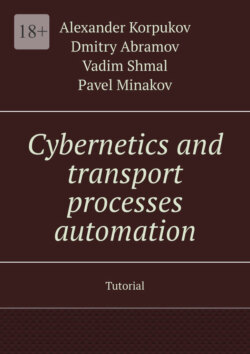Читать книгу Cybernetics and transport processes automation. Tutorial - Vadim Shmal - Страница 3
Process simulation
ОглавлениеEthan Zhang has developed a number of approaches to creating self-modifying systems. Among other things, Zhang described the problem of designing and implementing reliable controls.
Here is an example of a self-modifying control system. One way to think of such a system is that it is like a closed-loop controller, where there is some influence of the system on the controller, and the controller is to some extent the input or output of the system.
Process modeling is the process of transforming data from a physical environment into a graphical representation and allowing the user to interact with that environment. Complex technological systems require efficient and powerful modeling. This includes adaptive modeling and assessment techniques, predictive analytics, and analysis of end-to-end system behavior such as total life cycle cost, economic impact, and potential for failure. Digital process control encompasses many subsectors. They differ according to the specific tasks of the subject area. Although it provides control over the operation of machines, digital process control provides the ability to obtain in-depth information about the behavior of machines and the information flow between them. Process simulation allows operators to remotely monitor, troubleshoot, and automate process activities. It combines simulation, simulation and control to optimize and control the overall performance of a process, equipment or production line.
Controlling the output devices of an automated system often requires some knowledge of the system; this knowledge can be simulated on a computer, and these simulation tools can be used to remotely simulate equipment performance, system automation, and manufactured parts quality. These simulators are also a common way to access internal system information.
Cybernetics studies control systems as a concept, trying to discover the basic principles underlying things like behavior, motivation, learning, and goal pursuit.
Although this is the broadest sense of cybernetics, the exact scope of cybernetics in this broader sense is not entirely clear, since cybernetics in a narrower applied sense is often limited to the «higher» problems of managing communication systems. In applications of cybernetics to the human system, this understanding of cybernetics usually differs. Cybernetics is a view of complexity. That is, cybernetics studies how things connect and the interactions that occur between them. Cybernetics has received widespread attention thanks to research in computer science, systems theory, and information theory. Much of this research, especially in fields such as robotics, incorporates ideas from cybernetics and looks at the human systems that underlie them.
Cybernetics is the study of how complex feedback systems, feedback loops, and other dynamic processes interact to create a complex organization. It covers management theory and social and economic systems. In its simplest form, cybernetics studies feedback systems, which are usually «motivated by one or more goals, which may be known or unknown». It is often studied alongside other fields such as mechanics, electronics, mechanical engineering, manufacturing, and others such as economics.
Control theory and feedback loops in one form or another can be found in most modern technologies. For example, in systems engineering, control theory is used to design and implement automated control systems, and in operations research, control theory is used in linear programming problems. In computer science and systems engineering, feedback loops are also used to design and implement electronic communication networks. Many modern forms of computing have both a control theory-based implementation and a model-based or cybernetics-based abstraction.
In architectural theory, cybernetics has a long and sometimes controversial history. The philosophy of cybernetics has a built-in concept according to which the goal of the scientific study of the phenomena of life is to achieve intellectual control over them. In other words, cybernetics sought to achieve absolute control over the subject. Since cybernetics deals with the mechanics of a complex system, it has a profound effect on the physical aspects of building construction. An example of this is the construction of the Olympic Village for the 1996 Summer Olympics, which was recognized by the American Society of Civil Engineers as the most advanced technology in architecture because it used embedded data-driven computer systems to control the buildings. Computer systems provided efficient waste disposal to save money on sanitation. The main buildings have been optimized for energy efficiency and designed so that simple power cables can be easily replaced. This resulted in less damage to buildings in the event of a fire. The buildings were built with many devices and computer control. In many ways, the Olympic Village is a symbol of the utopian cybernetic architectural movement.
